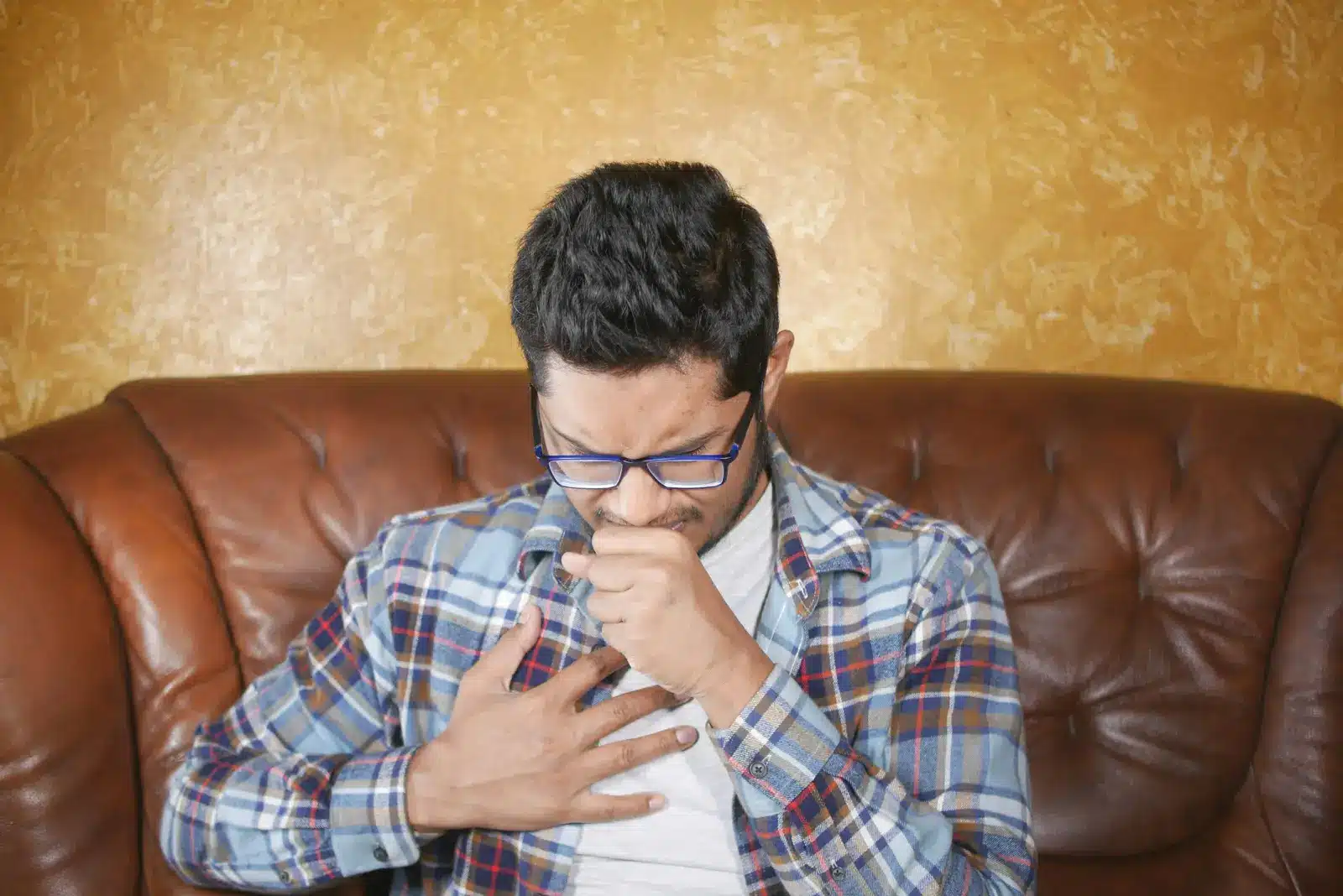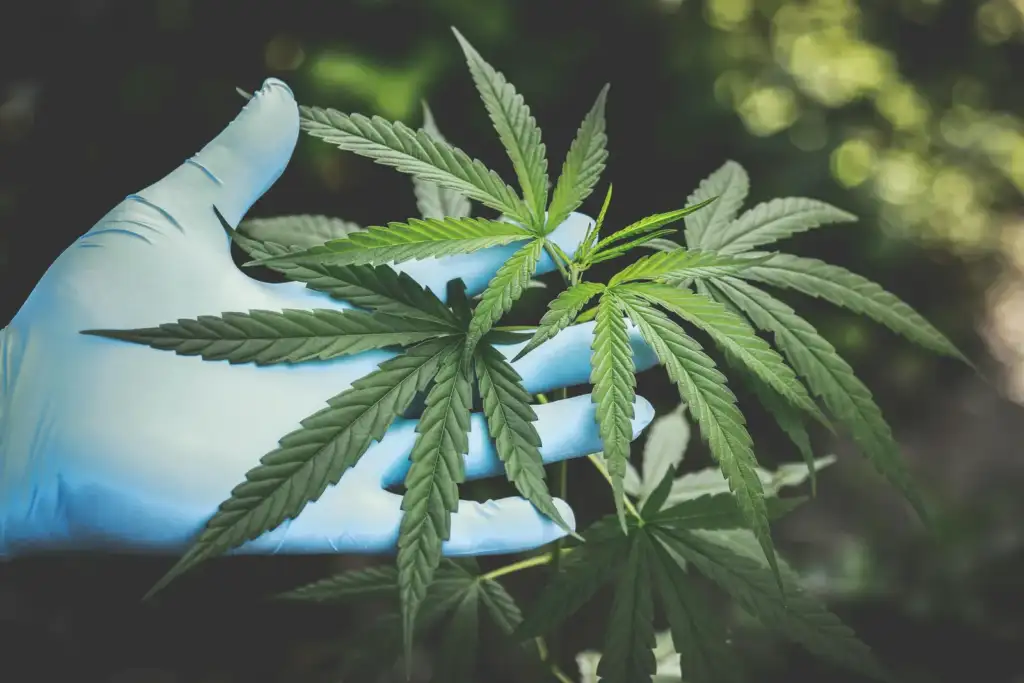Cannabis concentrates, or dabs, have gained significant attention in recent years. These potent extracts, which can contain up to 80-90 percent THC compared to 10-25 percent in the traditional cannabis flower, represent a major shift in how some people consume marijuana.
Made by extracting the active compounds from cannabis plants using solvents like butane or CO2, dabs appear as sticky, waxy, or glass-like substances that people heat and inhale. While dabs have become popular among experienced cannabis users seeking stronger effects, they also raise important safety considerations, as both the production process and consumption methods can pose serious risks to your health.
What Are Dabs?
Dabs are concentrated forms of cannabis made by extracting THC (tetrahydrocannabinol) and other cannabinoids from marijuana plants.[1] These extracts come in several forms, each with slightly different consistencies and appearances, which include:[2]
- Shatter looks like amber-colored glass and has a brittle texture that can easily be broken apart.
- Wax, as its name suggests, has a soft, waxy consistency similar to ear wax or beeswax.
- Budder is a creamier, butter-like variant that’s more malleable.
- Live resin, made from fresh-frozen cannabis plants rather than dried buds, has a more sauce-like consistency and preserves more of the plant’s original flavors and aromas.
To create these concentrates, processors typically use solvents like butane, propane, or CO2 to strip the cannabis plant’s trichomes. These tiny, crystal-like structures contain most of the plant’s active compounds.[3] After extraction, the solution is carefully purged of all solvents, leaving behind a pure concentrate. Some newer methods use heat and pressure instead of chemicals to create rosin, a solventless alternative.
People consume dabs by heating them to high temperatures on a special apparatus called a dab rig. This apparatus resembles a water pipe but includes a heating element called a nail. When the concentrate is applied to the heated surface, it vaporizes instantly, creating a potent vapor that’s inhaled. More recently, electronic dab rigs and vape pens designed specifically for concentrates have emerged as alternatives to traditional dabbing methods.
Why Are Dabs Used?
The high concentration of THC in dabs means people can feel intense effects very quickly, which can lead to problematic patterns of use. While some medical marijuana patients may use concentrates under careful medical supervision for conditions like chronic pain, recreational dab use carries significant risks due to its extreme potency.
The extraction process removes most plant materials, creating concentrates with THC levels of 80-90 percent – far higher than traditional cannabis at 10-25 percent.[4] This dramatic increase in potency means even frequent cannabis users can easily consume too much, potentially leading to adverse reactions, including anxiety, paranoia, and racing heart rate.
Many people start using dabs seeking a more powerful high than they can achieve with traditional cannabis, unaware of how the increased potency may impact their health and well-being. The concentrated nature of dabs can make it challenging to gauge the appropriate dosage, increasing the risk of negative experiences and potential psychological distress.
While some argue that dabs are more efficient due to their strength, this potency makes them risky. The extreme concentration of THC can overwhelm the body’s endocannabinoid system and potentially contribute to cannabis use disorder.[5]
What is Cannabis Use Disorder?
Cannabis use disorder is a clinical diagnosis defined in the Diagnostic and Statistical Manual of Mental Disorders (DSM-5), the authoritative guide used by healthcare professionals to diagnose mental health conditions.[6] According to the DSM-5, cannabis use disorder is characterized by a problematic pattern of cannabis use leading to clinically significant impairment or distress in multiple areas of a person’s life, including work, relationships, and health.
To receive a diagnosis, a person must experience at least two symptoms within 12 months, ranging from using cannabis in larger amounts than intended to developing tolerance and experiencing withdrawal. The severity is classified as mild, moderate, or severe based on the number of symptoms present.
With the increasing potency of cannabis products, particularly concentrates like dabs, the risk of developing cannabis use disorder has become more significant, as the intense effects and rapid delivery of highly concentrated THC can accelerate the development of tolerance and dependence.
What Are the Effects of Dabbing?

The intense concentration of THC in dabs can produce powerful and potentially overwhelming effects, both physical and psychological. People often experience an immediate and intense rush that can include rapid heart rate, dizziness, and anxiety.[7]
Physical and psychological effects can include:[8]
- Rapid heart rate and increased blood pressure
- Severe coughing and lung irritation from the hot vapor
- Fainting or loss of consciousness
- Nausea and vomiting
- Headaches and disorientation
- Severe anxiety and panic attacks
- Paranoia and fearfulness
- Hallucinations
- Memory problems and confusion
- Disconnection from reality
- Racing thoughts and inability to focus
Regular dabbing can also lead to significant tolerance development, meaning people need increasingly larger amounts to achieve the same effects. This pattern can contribute to psychological dependence and cannabis use disorder. Some people report withdrawal symptoms when trying to stop, including irritability, sleep problems, and intense cravings.
The high potency of dabs also increases the risk of drug-induced psychosis, particularly in those with a personal or family history of mental health conditions. Emergency room visits related to dabbing have increased in recent years, often due to severe psychological reactions or accidents that occur while under the influence.
Is Dabbing Dangerous?
The production process of dabs poses serious safety hazards. Creating concentrates often involves highly flammable solvents like butane, and amateur extraction attempts have resulted in explosions, fires, and severe injuries. Even in states where cannabis is legal, many concentrate producers operate without proper safety protocols or quality control measures.
The act of dabbing itself carries risks due to the extremely high temperatures required. People can suffer severe burns from hot equipment, and the intense heat can create harmful byproducts when certain contaminants are present in low-quality concentrates. Repeated exposure to high-temperature vapor may also cause lasting damage to the respiratory system.
Additionally, unlike traditional cannabis use, the extreme concentration of THC in dabs can make it difficult for people to gauge the appropriate dosage, leading to more frequent adverse reactions and potentially dangerous situations.
Long-term health concerns include:[9]
- Potential lung damage from repeated exposure to hot vapor
- Increased risk of developing cannabis use disorder due to high potency
- Higher likelihood of experiencing psychotic symptoms
- Greater risk of accidents due to severe impairment
- Possible cognitive impacts from regular exposure to high THC levels
- Burns and injuries from handling hot equipment
How Can I Get Help?
Professional help is available if you or a loved one is struggling with cannabis concentrates. Many treatment centers specialize in addressing addiction and substance use disorders related to high-THC cannabis products. The increasing potency of these concentrated forms of marijuana, combined with the risks of residual solvents and contaminants, makes seeking treatment especially important for long-term well-being.
Recovery typically begins with a comprehensive evaluation that considers both substance use and mental health concerns. Many people who regularly use cannabis concentrates find they need increasingly larger amounts over time, leading to negative effects in their daily lives. Treatment programs can help address not only the immediate challenges of cannabis use but also underlying factors that may contribute to substance abuse.
Reaching out for help is the first step on the road to recovery – contact a treatment center today to learn about programs that can help you or your loved one break free from marijuana use. Many facilities offer confidential assessments and can discuss options that fit your specific situation.
FAQ’s
Can you overdose on dabs?
Consuming too much cannabis through dabbing can cause severe adverse reactions that may require emergency medical attention, such as extreme anxiety, panic attacks, paranoia, racing heart rate, and, in some cases, temporary psychosis or loss of consciousness. These reactions can be particularly dangerous when combined with the risk of physical injury from hot dabbing equipment.
Is dabbing more addictive than smoking cannabis?
People can develop tolerance and dependence quickly due to the significantly higher THC concentration in dabs compared to other kinds of cannabis. The intense, immediate effects of dabbing can create stronger reward patterns in the brain, potentially accelerating the development of cannabis use disorder. People often report needing increasingly larger amounts to achieve the same effects, and many experience more severe withdrawal symptoms when trying to stop.
What are the long-term effects of dabbing?
Regular dabbing can cause several concerning long-term effects. Repeated exposure to high-temperature vapor can damage the respiratory system and lung tissue. Cognitive impacts may include memory problems, difficulty concentrating, and impaired learning ability.
Mental health concerns such as anxiety disorders, depression, and increased risk of psychosis have been reported, particularly in those with underlying conditions. Physical risks include burns and injuries from handling hot equipment, and there may be additional unknown health impacts from exposure to residual solvents or contaminants in improperly purged concentrates.
Sources
[1] What is Dabbing? (n.d.). Partnership to End Addiction. https://drugfree.org/article/what-is-dabbing/
[2] Bidwell, L. C., Martin‐Willett, R., & Karoly, H. C. (2021). Advancing the science on cannabis concentrates on behavioural health. Drug and Alcohol Review, 40(6), 900–913. https://pmc.ncbi.nlm.nih.gov/articles/PMC9878551/
[3] Oregon Occupational Safety and Health : Information for cannabis processors : Cannabis Processors : State of Oregon. (2016). Oregon.gov; Information for cannabis processors : Oregon Occupational Safety and Health. https://osha.oregon.gov/essentials/cannabis/processors/pages/default.aspx
[4] Stuyt, E. (2018). The Problem with the Current High Potency THC Marijuana from the Perspective of an Addiction Psychiatrist. Missouri Medicine, 115(6), 482. https://pmc.ncbi.nlm.nih.gov/articles/PMC6312155/
[5]Archie, S. R., & Cucullo, L. (2019, December 6). Harmful effects of smoking cannabis: A cerebrovascular and neurological perspective. Frontiers in pharmacology. https://pmc.ncbi.nlm.nih.gov/articles/PMC6915047
[6] Cannabis Use Disorder: What It Is, Symptoms & Treatment. (2024, October 4). Cleveland Clinic. https://my.clevelandclinic.org/health/diseases/cannabis-use-disorder
[7] Butane hash oil – Alcohol and Drug Foundation. (n.d.). Adf.org.au. https://adf.org.au/drug-facts/butane-hash-oil/
[8] CDC. (2024, February 26). Cannabis Health Effects. Cannabis and Public Health. https://www.cdc.gov/cannabis/health-effects/index.html
[9] What is Dabbing? (n.d.). Partnership to End Addiction. https://drugfree.org/article/what-is-dabbing/

